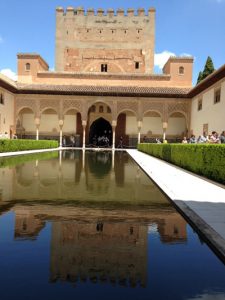
Missing Morocco
We hopped on a ferry bound for Spain and said goodbye to Morocco. We said goodbye to the chaos: motorbikes zipping through tiny medina alleys, the not-so-pedestrian-friendly crosswalks, the market stall salesmen trying to get your attention and the bumpy-swervey roads. Once we entered Spain, I felt my body relax as I found comfort in the known. The roads were straight and not a pothole in site; I could actually sleep on the bus without getting sick. I could cross at a crosswalk and not fear for my life. I could walk down the shopping center and not be pulled in a zillion different directions.
However, I missed Morocco. I missed the cultural shock at every corner. I missed the boiling-hot mint tea served at every meeting. I missed the warmth and hospitality of the people. I missed trying to figure out and understand a different culture. Spain has a comfort and a familiarity to it that prevented me from having a critical eye to the cultural differences. Ironically, I found myself less interested in the culture.
Through the comfort and familiarity I found in Spain’s Western culture, I began to see subtle forms of familiarity from the Moroccan culture. Seville and Granada was once controlled by the Almohads (originally from Morocco) and many architectural influences from them are still there today. In Seville, tiles of the same colors and patterns of Morocco can be seen decorating the inside foyers of houses. The church tower in Seville was originally a minaret with keyhole doorways and Arabic designs. Both Seville and Granada still have medina-type neighborhoods. The Alhambra in Granada truly showcases the Arabic power and influence in the region.
Between my nostalgia of Morocco and comfort of Spain, I was caught up in the similarity of the architecture and amazed by the impact the Almohads had in the area.



